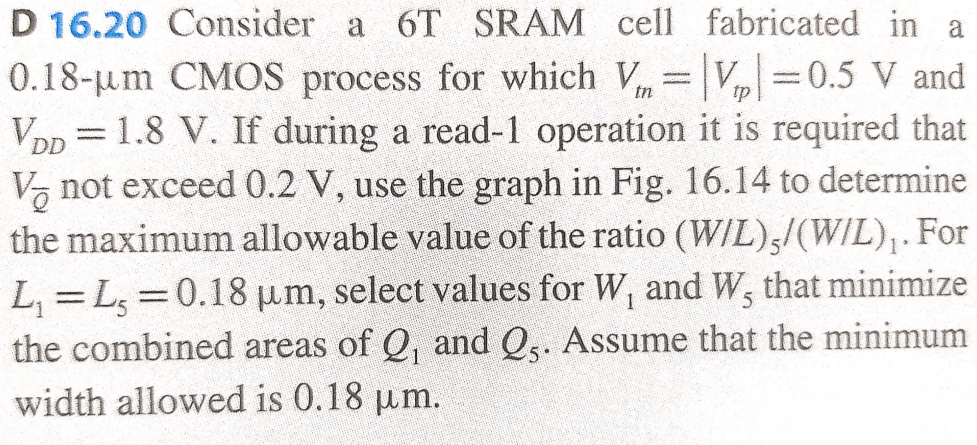D 16.20 Consider a 6 T SRAM cell fabricated in a 0.18−μm CMOS process for which Vtn = |Vtp| = 0.5 V and VDD = 1.8 V. If during a read-1 operation it is required that VQ¯ not exceed 0.2 V, use the graph in Fig. 16.14 to determine the maximum allowable value of the ratio (W/L)5/(W/L)1. For L1 = L5 = 0.18 μm, select values for W1 and W5 that minimize the combined areas of Q1 and Q5. Assume that the minimum width allowed is 0.18 μm.
